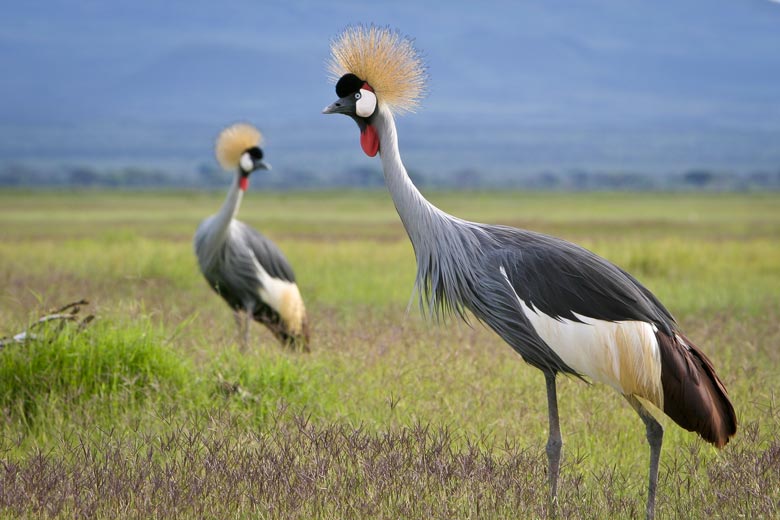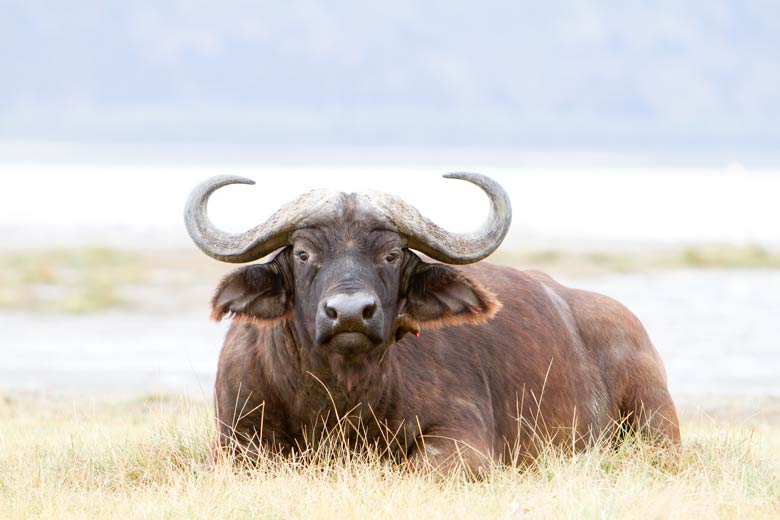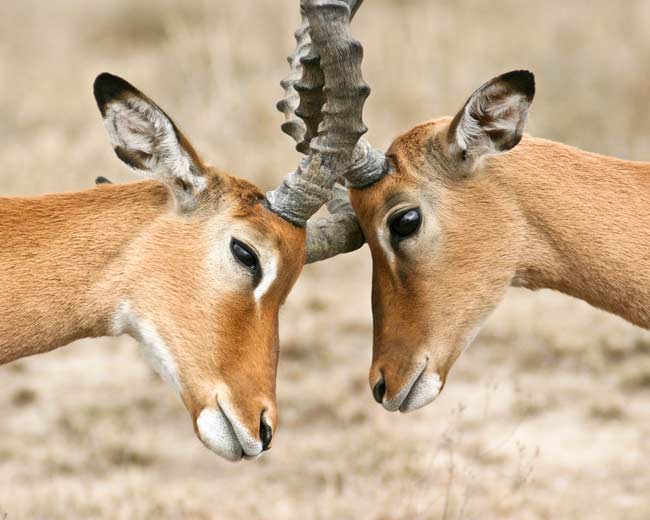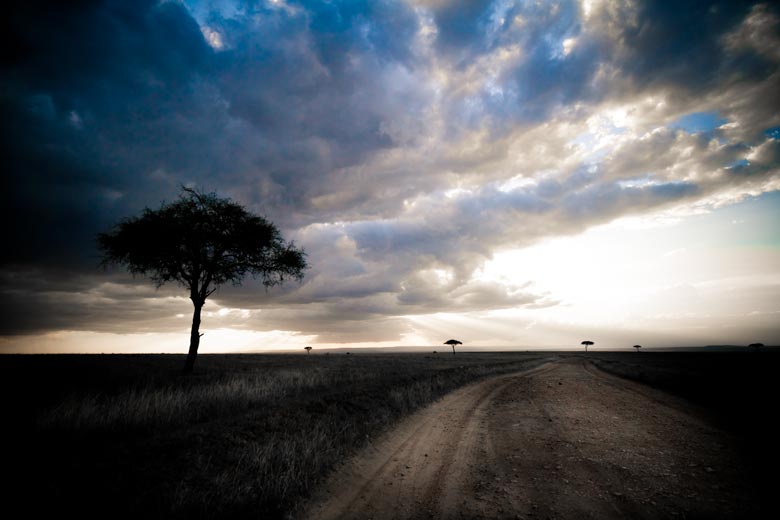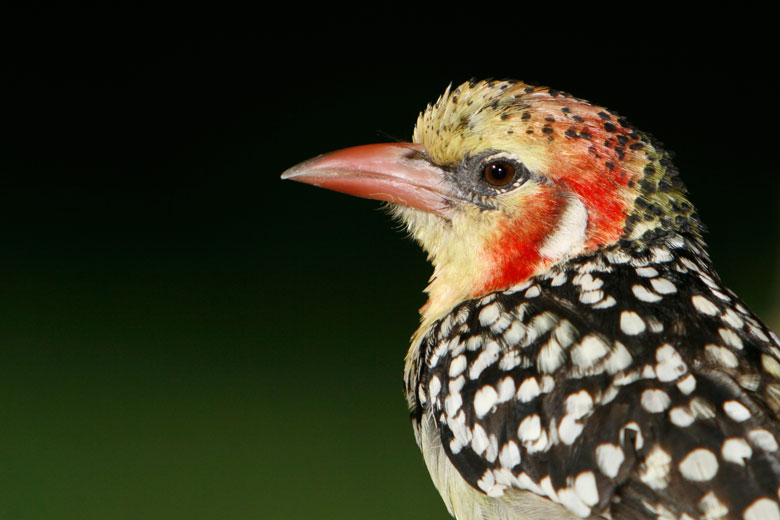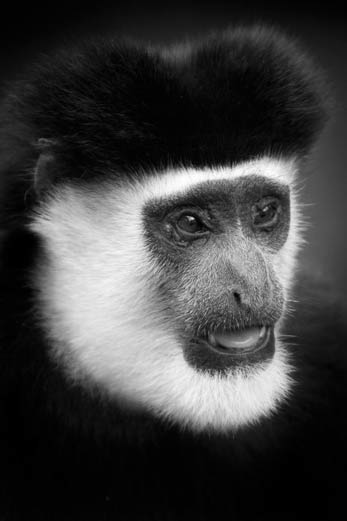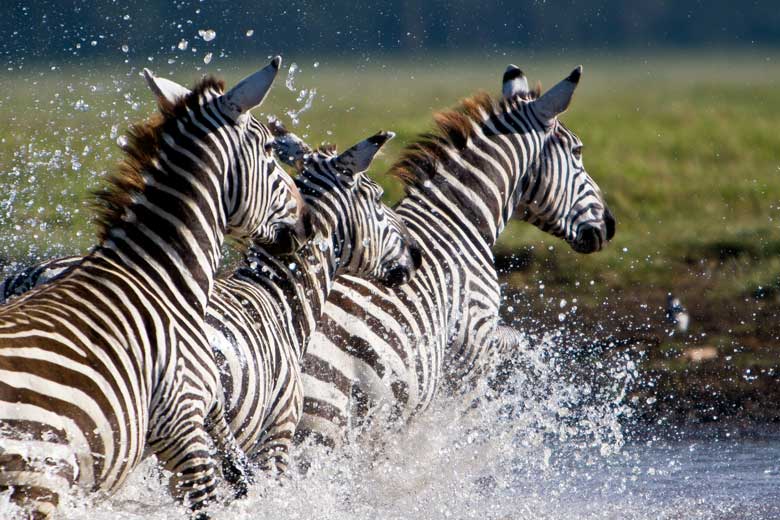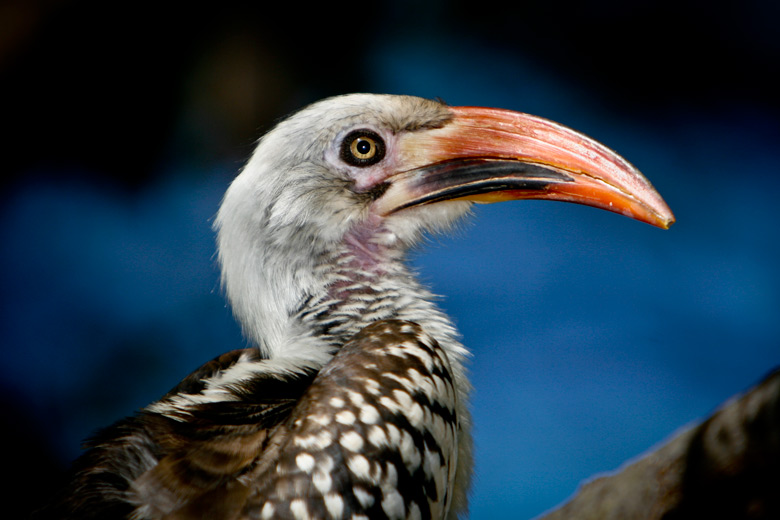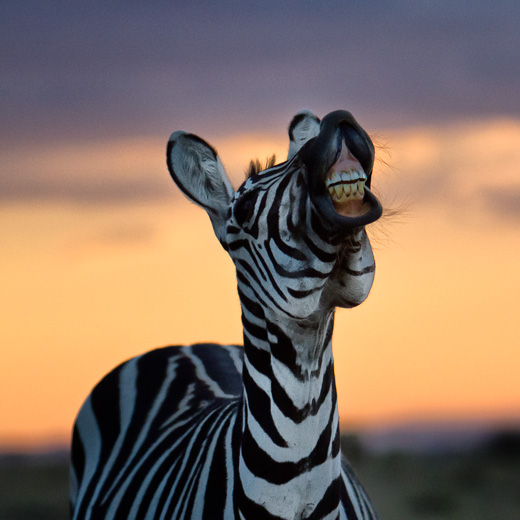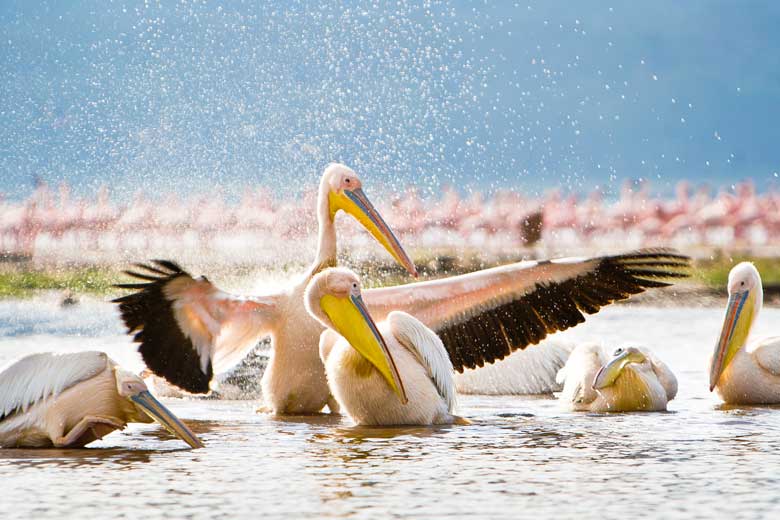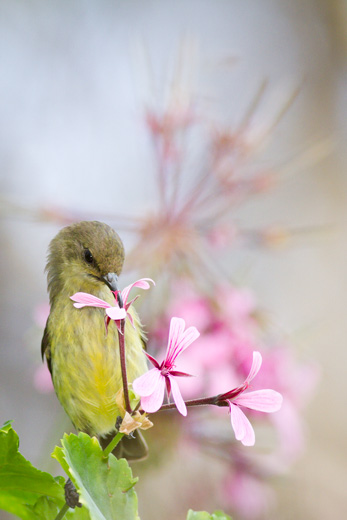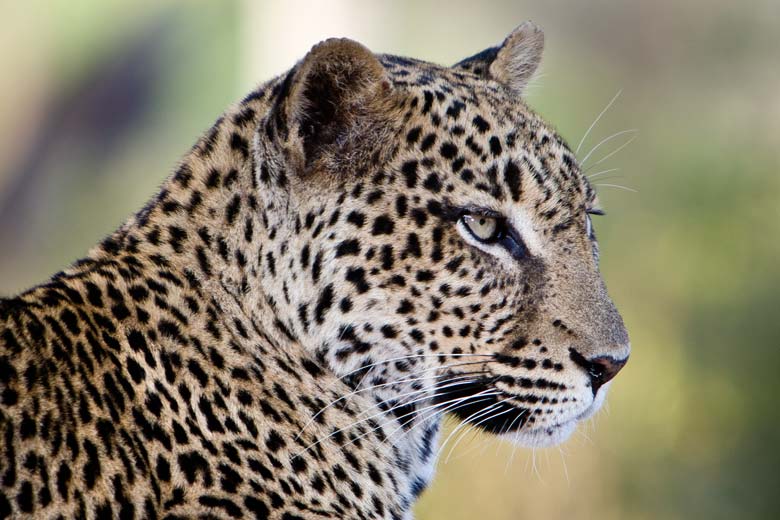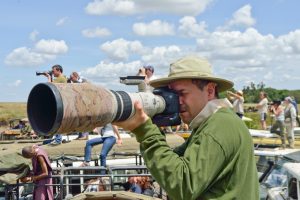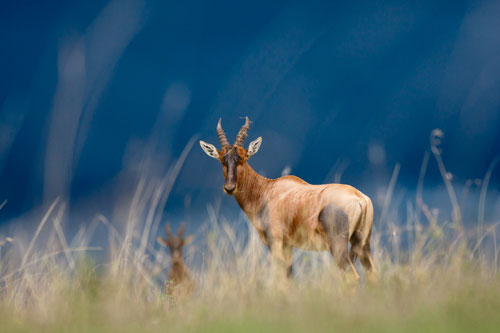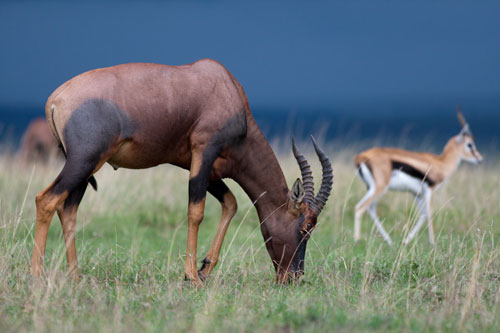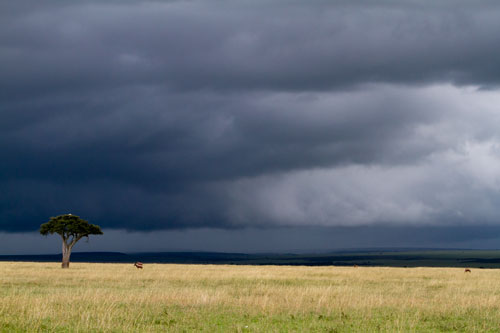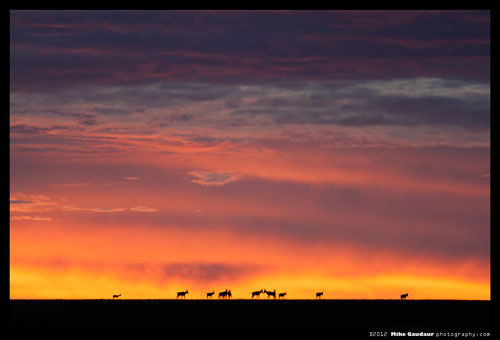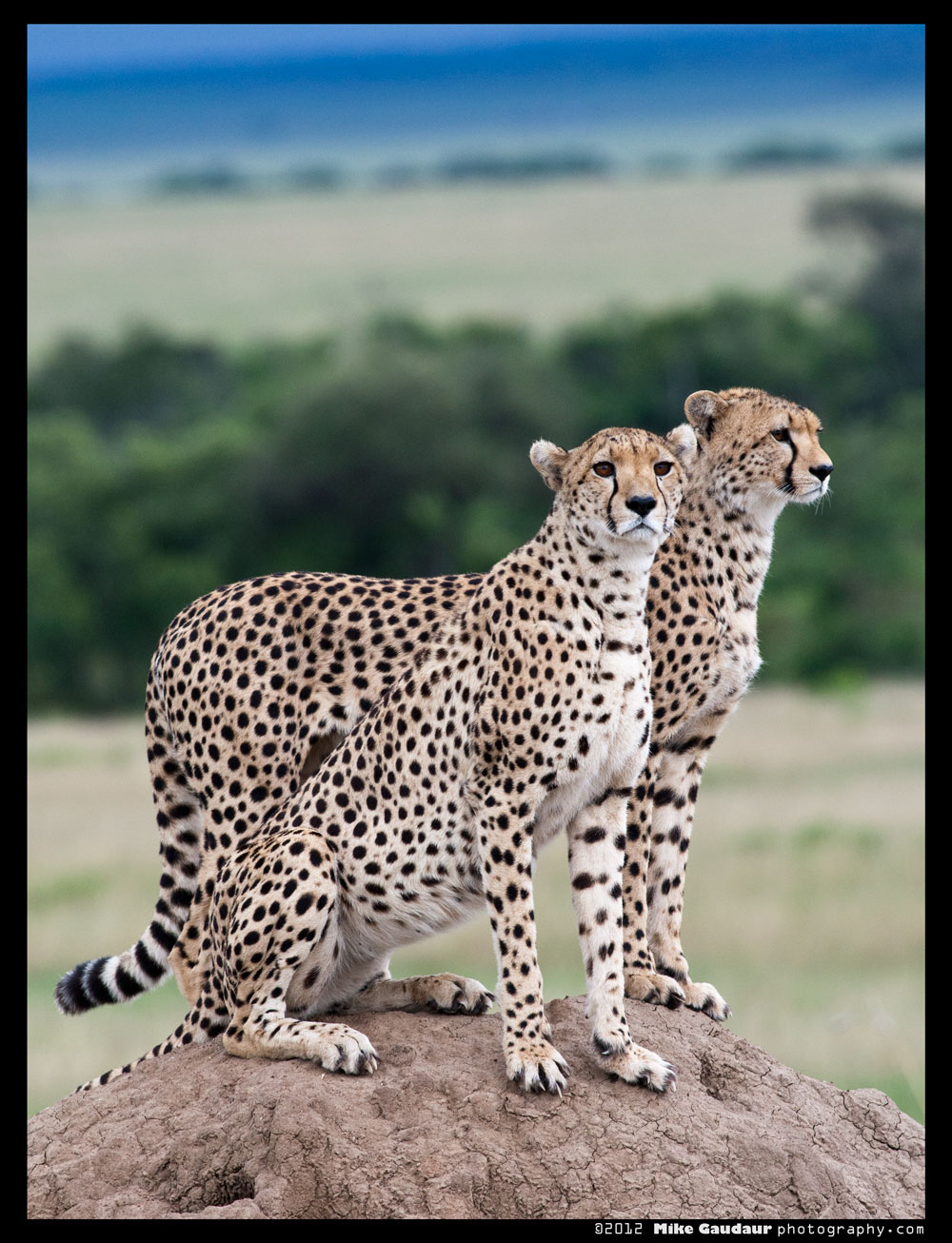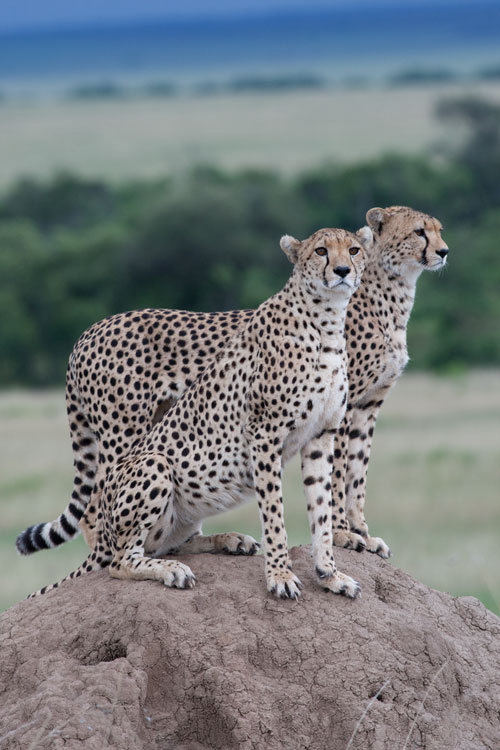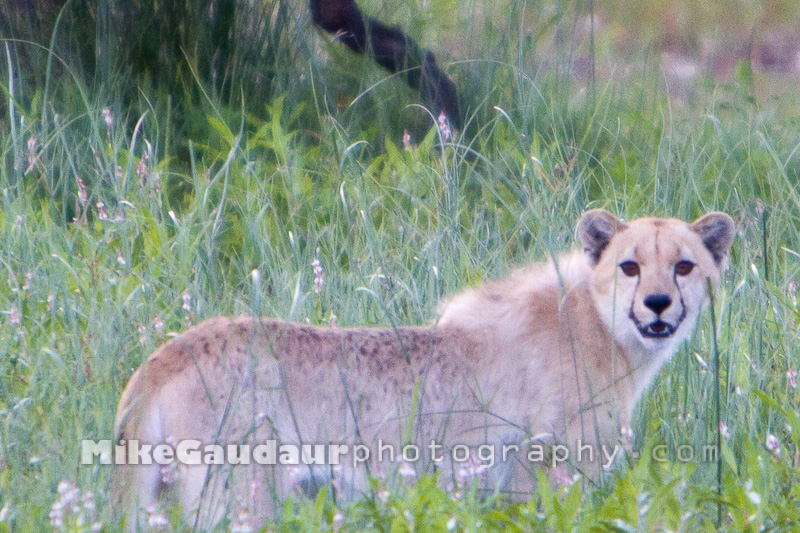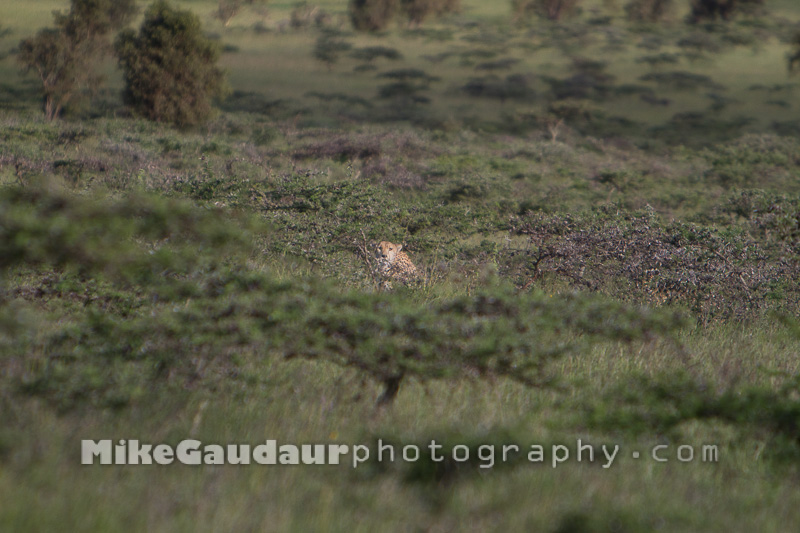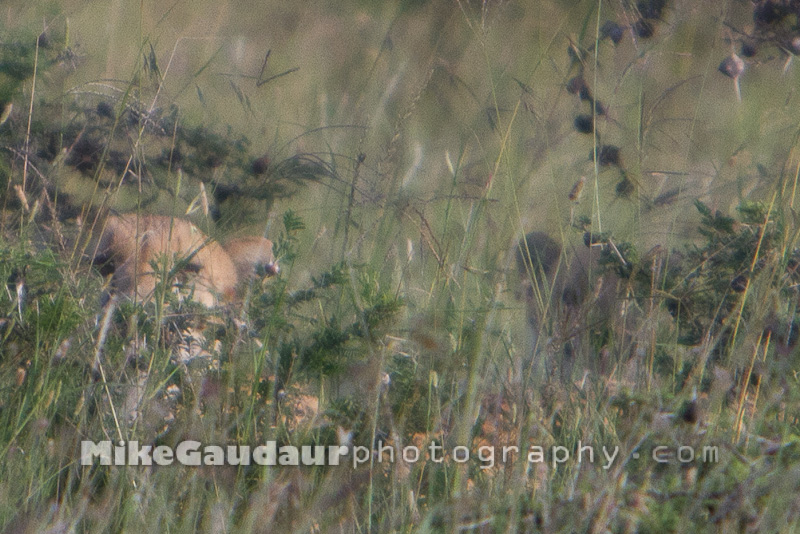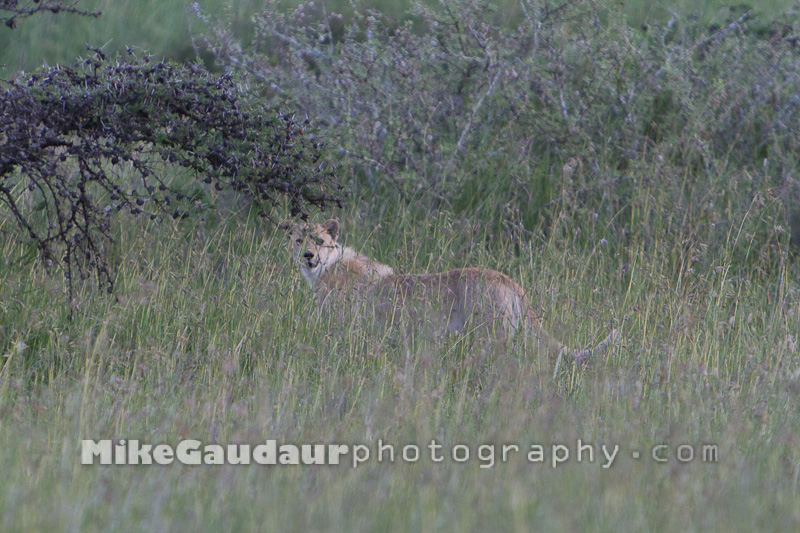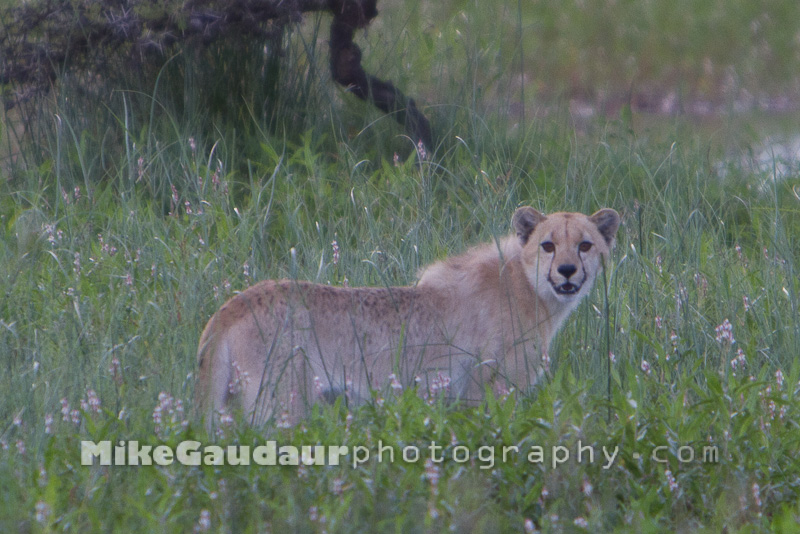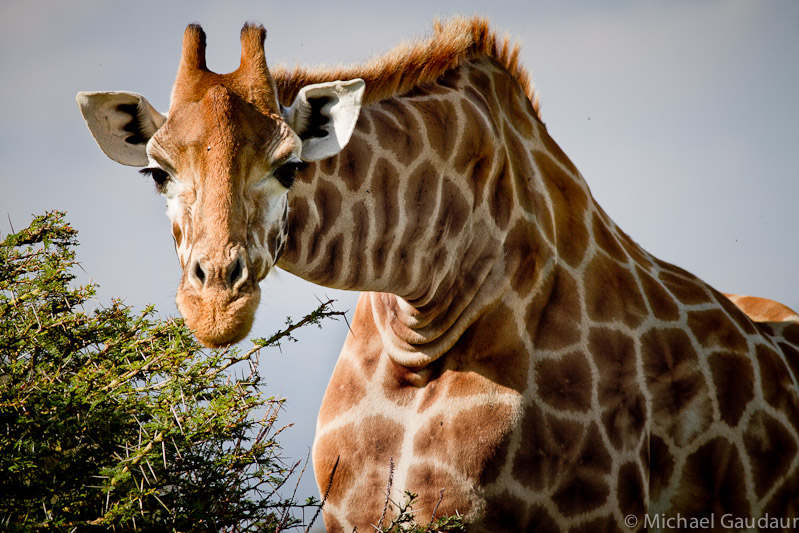One of the most unique Kenyan photo safari experiences is a night at the Ark in Abedares National Park. Nestled beside a waterhole on the edge of a deep ravine high in the Abedare mountains, the Ark provides an African wildlife viewing extravaganza. This particular location was chosen for building the Ark because of the rich mineral deposits that attract a variety of animals.

The Ark game lodge in Abaedare National Park, Kenya.
One of the coolest features at the Ark is a ground level bunker that allows you to get lens to kneecap with dozens of elephant at a time. The hide is constructed of stone and sunk 3 feet (1m) into the ground, so it is very safe. It is an unforgettable experience to be so close to the massive beasts that frequent the waterhole.
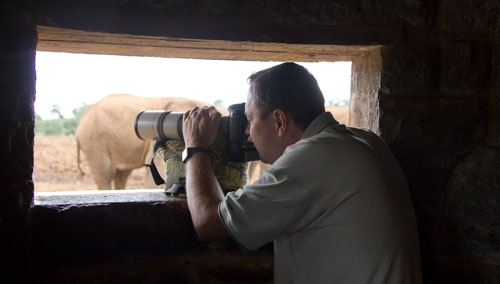
Mike shooting elephant from the safety of the bunker. Photo by Steve Taylor.
The hide is well designed to allow several photographers clear viewing of about a 100 degree viewing angle. The edge of the water hole (not visible in the image above) is only 20 feet (6m) away, so the animals come in quite close. A pile of large boulders stacked up around the hide make it impossible for animals to get any closer than 6 feet (2m).
I chose to use my 10-20mm Sigma zoom for wide angle shots, my 70-200mm for frame filling animal portraits and 400mm for close-up detail shots. A bean bag provided ultimate stability and with ISO’s up to 800 I was able to keep shooting right up til dusk. The Ark does not allow flash at all, so fill flash was not an option in this case. One nice feature was the fact that the glass front wall of the Ark acted as a giant reflector as the sun rose behind the elephants. It was enough to fill in the deep shadows, and create some dramatic lighting (see the 400mm close-up below..
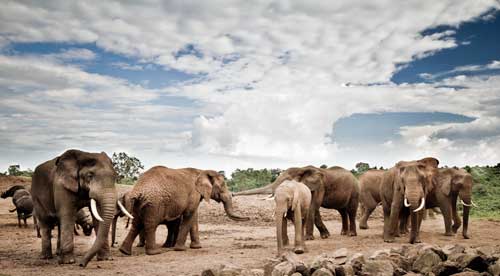
20mm, f-6.3, 1/125s, iso 400

200mm, f-2.8, 1/200 sec., iso 320
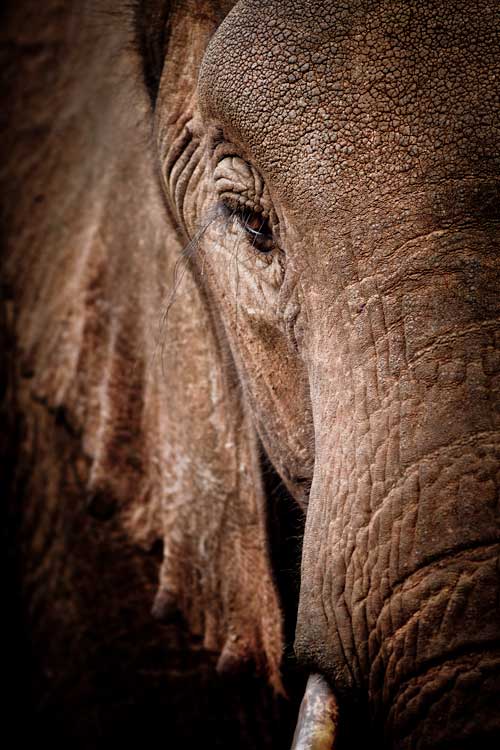
400mm, f-5.6, 1/125s, iso 320
We experienced some rain through the night, but it eventually cleared up. At dawn we were treated to a crystal clear view of Mt. Kenya. Although the strong back lighting made images around the waterhole difficult, the design of the Ark allowed shooting from both sides.
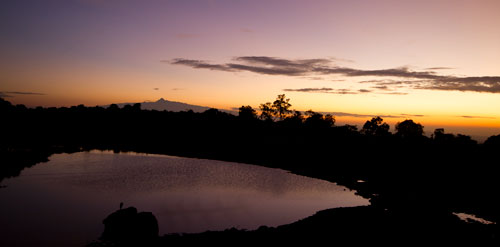
Sunrise over the waterhole with Mt. Kenya in background.
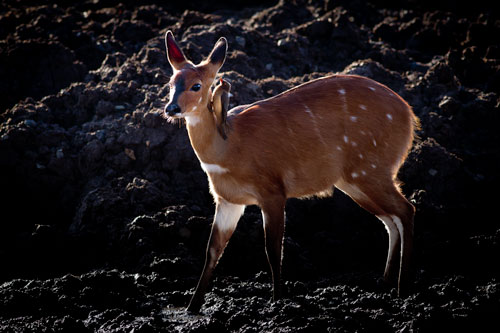
A bush buck doe strongly side lit by the sun. Sunlight reflected from the windows of the Ark lit her face. The oxpecker on her neck was a nice bonus. 400mm, f-5.6, 1/125s, iso 200.
The Ark is a bird-watcher’s paradise with raised platforms and boardwalks reaching out into the forest. The birds are fed each afternoon, but the real feast for the birds were all the moths and insects attracted by the powerful lights that shine on the waterhole all night. Flowering bushes and trees surround the Ark attracting sunbirds as well. Cranes, heron, grebes, and other water fowl enjoy the waterhole.
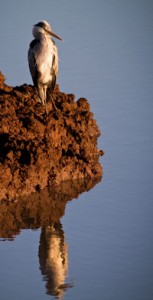
A grey heron basks in the light of the rising sun. Shot from the hide. 400mm, f-7.1, 1/250s, iso 200.
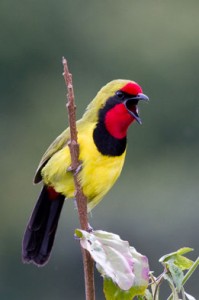
A Doherty's bush shrike sings joyously from his perch beside the Ark. 400mm (cropped) f-6.3, 1/125s, iso 400.
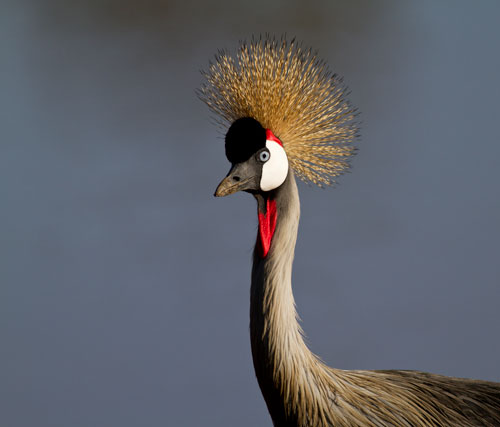
A grey crowned crane, beautifully side-lit by the rising sun. I waited until the bird moved in front of the water so that the blue background would compliment the bird's golden crown and bright red wattle.400mm, f-5.6, 1/1600s, iso 200.
The food was excellent, the service was friendly and prompt, and the manager, Philip Nyagah, personally ensured that we enjoyed our stay.
